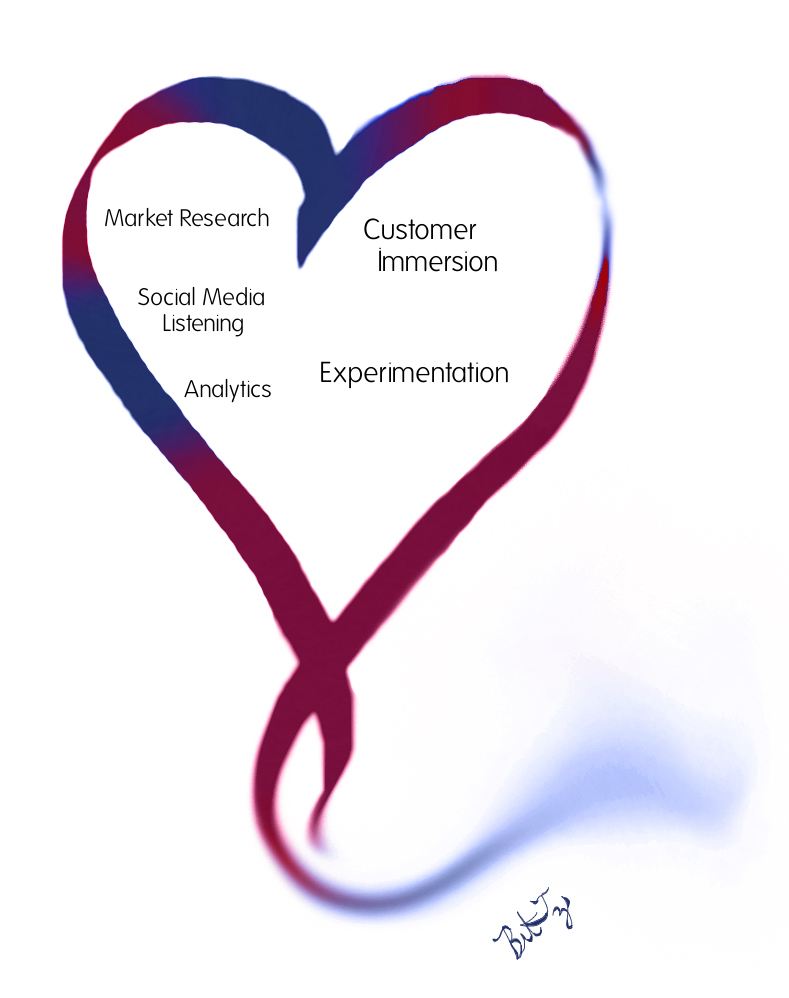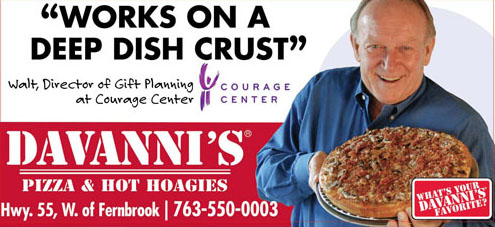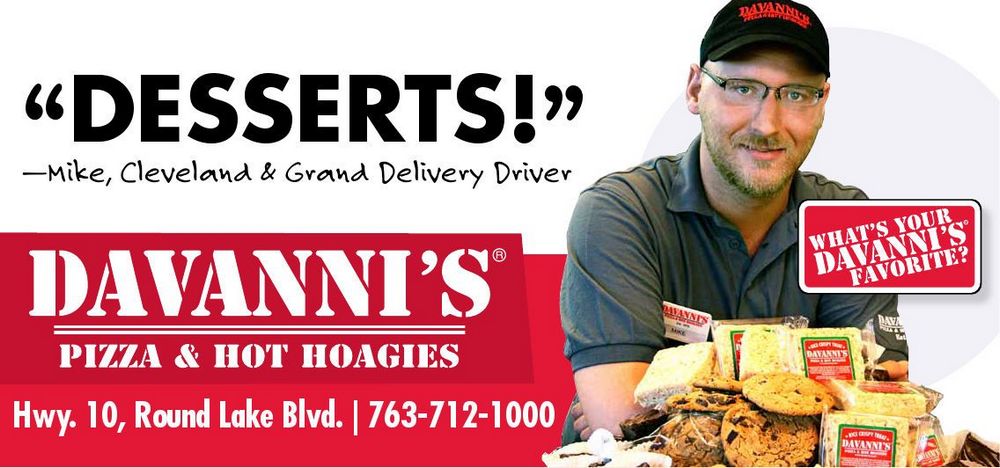“We pretty much let our employees and customers decide what’s on our menu.”
That’s a great example of the philosophy that has led to long-term success at Davanni’s, a Twin Cities pizza and hoagy restaurant. While their local focus and fun atmosphere are definitely part of the mix, it is the extreme efforts to keep fresh with customers and employees that really drive their results.
Davanni’s has 21 locations throughout the Twin Cities. They have been in business for 37 years, featuring family-friendly food on the lower end of the cost spectrum. I originally asked to interview them about their experience with Coke’s new soda machine. But I ended up discovering the best example I’ve found of a company trusting their strategies to their customers and front-line employees. This story is a great example for any industry.
Engaging Davanni’s Customers Personally
The Heart of the Customer model uses a 5-prong approach to find the inspiration for a customer-inspired experience. Most organizations are strong in three or four areas, but Davanni’s is the first I have seen with a deliberate approach to all five.

The Heart of the Customer Model
Market Research. Director of Marketing Tim Huberty previously owned a market research consultancy with Davanni’s as his client. He therefore has a comprehensive approach, with customer satisfaction surveys, focus groups and customer intercepts. While their annual customer satisfaction is not run frequently enough for my taste, they offer so many other programs that it is easily forgiven.
The company averages about one focus group a month to learn about changing tastes and to test out new ideas. Tim leads these personally, allowing him to immediately act upon what he learns.
Analytics. We spent less time here, but Tim referenced access to all types of data. He can tell you what menu items work best in each location, and how pop sales (soda for those not in the Midwest) vary depending on weather and location.
Social Media. Davanni’s has an active Facebook page and regularly monitors tweets. In fact, one of their fifteen corporate employees is focused largely on social media, staying on top of trends and responding personally to any customer disappoints. This level of conversation makes the social media personal, and further engages customers.
Customer Immersion. Customer Immersion and Experimentation are the sections most companies miss, but are where Davanni’s is particularly strong. Tim was not familiar with the model, but largely walked me through it! Without prompting he mentioned making pizzas at a store the previous Tuesday. The owner visits each location at least twice a month, talking with employees and learning about customers. Fourteen of the fifteen corporate employees came from the restaurants, with Tim the sole exception. He tells me that the rest of the staff still thinks that he can’t make a pizza, even after almost ten years!
Corporate employees spend time in the restaurants each month. What I really love is that they do not have a structured program – this is just how they operate.
As with many restaurants, Davanni’s offers “Insiders” a monthly email newsletter with coupons and articles. But what makes their newsletter unique is that it is sent directly from Tim’s account, rather than the standard [email protected]. This newsletter often starts a dialog. As Tim explains, “I can almost just count the seconds between when the email goes out and when I start getting responses.” Unlike typical email newsletters which feature one-way communication, Davanni’s uses theirs to start a conversation.
Experimentation. Davanni’s has one of the best testing programs I have seen. While you may not run a restaurant, their menu experimentation program offers a great guide on how your employees can contribute to your customer-inspired experience. It empowers employees to develop ideas, while enabling customers to vote them up or down. In fact, all new items in the last five years came from restaurant employees! Tim rattled these off as he looked at the giant menu on his office wall:
“We have the Chicken Bacon Honey Mustard Hoagy developed by Patty over at East Side, the TBC (Turkey Bacon Chipotle), that was developed by Roxie up at Roseville, the Chicken Florentine Pasta was developed by two employees Downtown…”
Many ideas never make it to the formal menu. The process starts locally:
- Employees experiment when making food for themselves and their friends.
- If the idea gets traction in the kitchen, employees work with their manager to refine the idea. Employees typically do not know food costs, so managers help determine whether the idea is feasible.
- Managers submit ideas to Davanni’s Director of Operations John Barrett, who reviews it for cost and operations implications. Ingredients generally need to come from existing stock, including the salad bar. Most ideas fail by this point, either because of cost or ingredient availability.
- Tim runs customer intercepts in the store. Participants try the food, give reactions, and fill out a one-page survey. About a quarter of items are approved to go to the next stage, a quarter are canceled, and about half involve going back for changes based on feedback.
- If approved, the item is offered in one store for a few months to test sales. Since different stores have different customer demands (Edina Manager Dan told me how salads are a big seller in Edina, while he sold very few in his time at the Savage location), they may try a different store if customer feedback is strong but sales are weak.
- Items with strong sales are scaled to three stores to test for broad appeal. Items that do not sell in other restaurants may remain at the first location.
- If the item makes it to the full menu, the originating employee(s) are rewarded with a sizable check. They are also featured in advertisements (see the attached) with the item they developed, which can be even more motivational than the check.
This process can take 6-9 months. The hottest item currently in development is a Buffalo Chicken Hoagy and Pizza (pun fully intended). These have gone through a few changes, as customers originally said it was not hot enough – a surprising comment for Minnesotans who consider ketchup as a spice!
Dan contrasted Davanni’s testing approach with one of his previous restaurant, who only asked for ideas at their annual conference. “There, they asked for ideas once a year. Here, it happens every day!”
Davanni’s offers similar programs for testing operational ideas. In fact, Dan walked me through a series of employee-generated ideas, including labels for to-go boxes, new salad bowls, weight and label charts, and new ways to make dough. While the company has worked with some consultants, they find they often don’t really understand Davanni’s customers as well as their employees do.
Engaging the Local Customer
Davanni’s is fiercely local, even hosting a page on its website discussing where they buy their ingredients. 90% of come from the Midwest, with the majority from Minnesota.
Their front page features an upcoming visit to the Andover Family Fun Fest, inviting customers to take a picture with Davanni’s “slice” (an employee in a pizza costume). They are frequent participants in local parades, keeping that community connection.
They even go so far as to feature employees and customers in ads and on billboards with their favorite foods.
Their connections with customers are so personal that sometimes Tim has to order food to-go, because otherwise customers will come up and want to discuss menu suggestions as he eats!
Engaging Their Employees for the Long-Term
In an industry that regularly experiences 200% turnover, Davanni’s has captured the secret to long-term retention. The #1 reason they lose employees is when they go to college. Dan has spent his entire career in restaurants, joining the company a year ago. He told me, “This is by far the lowest turnover I’ve ever seen. Half of the employees have been here over five years. Management sticks with the company. Our General Managers have an average tenure of over 23 years!”
This retention is enabled by their deliberate approach towards their employees. As Dan explained, “We’re just a restaurant. We’re not the highest-end place. But the way we hire and develop people, it sets them up for life. We see kids here for many years, and they come back to us and say how they got their start at Davanni’s.”
One customer agrees. “A number of my kids’ friends worked at Davanni’s, and they absolutely loved it. We always visit when my kids come back from college.”
Davanni’s does not view employment as a short-term relationship. They expect their employees to stay, and so trust them to do the right thing. Dan went on to say, “If an employee wants to be on a billboard, it will happen. They may need to wait a year, but they can make it.” Customers have a similar opportunity, and the company regularly sends out invitations to be part of a photo shoot.
This is what separates Davanni’s from other restaurants. Your server at Pizza Hut can never expect to be featured in their ads. And even if they could, what are the odds that they will be with the company in a year?
Analysis
Davanni’s provides one of the best customer and employee engagement stories I have found, and this starts from the top. By personally connecting with their customers and front-line employees, leadership clearly communicates: “We know you’re here for the long-term, so we’re going to trust you with our customer experience.”
The structural differences between a restaurant and a health plan, a medical device provider, or a fleet management company may lead you to believe you cannot learn from them. But Davanni’s has multiple lessons to teach any company:
- Stay fresh with your customers. Most leaders I consult with tell me “It’s too hard to find the time” to visit customers regularly. But this is where you find out what is and is not working. Davanni’s sets an expectation: “The action happens in the field. We need to be there to stay fresh with both our employees and customers.” You need to do the same. Visit customers every month – even in a B2B environment.
- Give your employees the key to your customer experience. Most of their employee ideas fail, just as they will with your employees. But their employees also provide great new thinking, as well as small improvements that have big impacts. How can you create a structure to let employees develop ideas, let your customers determine which ones work, then recognize those who are successful? This post provides more on this point.
- Create a dialog with your customers. Step outside the corporate wall to engage with your customers. For example, Starbucks has a website that invites customers to submit ideas that are used for product development. How can you create a conversation with your customers?
Is it easy? Of course not. But doing this right retains employees and enables you to develop a true customer-inspired experience. What could be more important than that?





